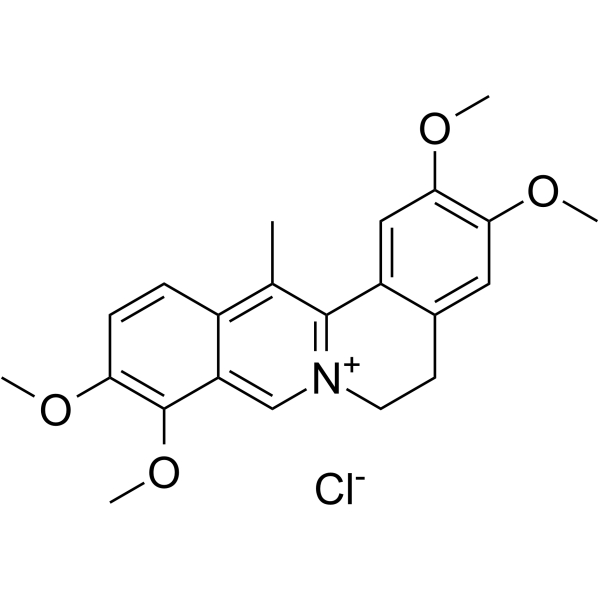All AbMole products are for research use only, cannot be used for human consumption.

For this product's availability, delivery time and price, please email [email protected] directly or click the "Inquiry Now" button below.
Dehydrocorydaline chloride (13-Methylpalmatine chloride) is an alkaloid that regulates protein expression of Bax, Bcl-2; activates caspase-7, caspase-8, and inactivates PARP. Dehydrocorydaline chloride elevates p38 MAPK activation. Dehydrocorydaline chloride has anti-inflammatory and anti-cancer activities. Dehydrocorydaline chloride shows strong anti-malarial effects (IC50 =38 nM), and low cytotoxicity (cell viability > 90%) using P. falciparum 3D7 strain.
| Molecular Weight | 401.88 |
| CAS Number | 10605-03-5 |
| Solubility (25°C) | DMSO 25 mg/mL |
| Storage | 2-8°C, dry, sealed |
| Related Bcl-2 Products |
|---|
| ABBV-467
ABBV-467 is a selective MCL-1 inhibitor (Ki: <0.01 nM). |
| WEHI-539
WEHI-539 is a selective inhibitor of Bcl-XL with an IC50 of 1.1 nM. |
| (Rac)-Lisaftoclax
(Rac)-Lisaftoclax ((Rac)-APG-2575) is a Bcl-2 inhibitor that can be uesd for hematologic malignancy research. |
| BcI-2/BcI-xI ligand 1
BcI-2/BcI-xI ligand 1 is a BcI-2/BcI-xI ligand, and can be used for synthesis of PROTAC BcI-2/BcI-xI Degrader-1. |
| AZD-5991 (S-enantiomer)
AZD-5991 S-enantiomer is the less active enantiomer of AZD-5991. |
All AbMole products are for research use only, cannot be used for human consumption or veterinary use. We do not provide products or services to individuals. Please comply with the intended use and do not use AbMole products for any other purpose.


Products are for research use only. Not for human use. We do not sell to patients.
© Copyright 2010-2024 AbMole BioScience. All Rights Reserved.
